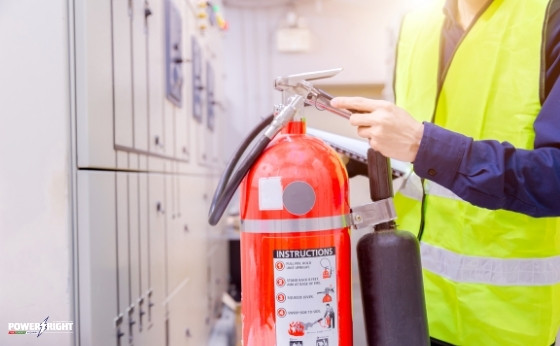
As an employer, you need to know that the Safety, Health and Welfare at Work Act 2005 is the central legislation document governing fire safety in Ireland. What do business owners need to do to safeguard the workplace against the risk of fire?
In order to achieve a decent level of fire protection of your premises, you need to ensure compliance with the fire safety act in Ireland on each of the following levels: detection, warning, maintenance and testing.
Every workplace must have arrangements for detecting fire. The choice of the fire detection system and its elements will depend on the premises. For example, a heat detector might be a better option than a smoke detector for a dusty environment. Choosing the right fire detection system will reduce the number of false fire signals and costly interruptions to business activities.
Pay attention to parts of the workplace where a cloud of smoke or fire could start and spread unnoticed. Such places could be a basement, a storage area or any other that is not visited on a regular basis. Fires that start and develop undetected can cause a serious danger to employees and visitors in the workplace.
An appropriate electrically operated fire alarm system with manual call points should be present in almost all buildings and structures. Such a system should feature sufficient sounders to warn the occupants throughout the workplace. The warning sound should be distinct from other sounds in the workplace.
If there are employees with hearing impairment or a high level of background noise, it is necessary to install a visual alarm, for instance rotating light or distinctive flashing.
In large buildings such as business centres and retail complexes, the business owner may consider setting up a voice evacuation system that can give both warning signals and verbal instructions.
Fire safety equipment in the workplace such as smoke detectors, fire alarms and extinguishers must be in effective working order. Such safety tools also include fixtures and fittings, for instance, exit signs, staircases, fire doors, corridors, and emergency lighting. Whatever the size of the premises, the person in charge should carry out regular checks, servicing and maintenance.
A nominated employee can conduct checks and routine maintenance work. However, it is vital to make sure fire-fighting equipment and installed systems are reliable and functioning well. Thus, it is better to ask a competent specialist to perform periodic servicing and any necessary repairs. Keep a record of the work carried out on such systems and equipment to demonstrate compliance with the law.
To provide a proper level of fire protection for your employees, clients and property and to comply with the law, start with assessing your current fire risks. Consider turning to an expert who can help you find the appropriate fire alarm and fire detection system according to the circumstances of the workplace or business. Once the workplace has all the crucial fire equipment in place, it has to undergo regular checks, maintenance and testing procedures.